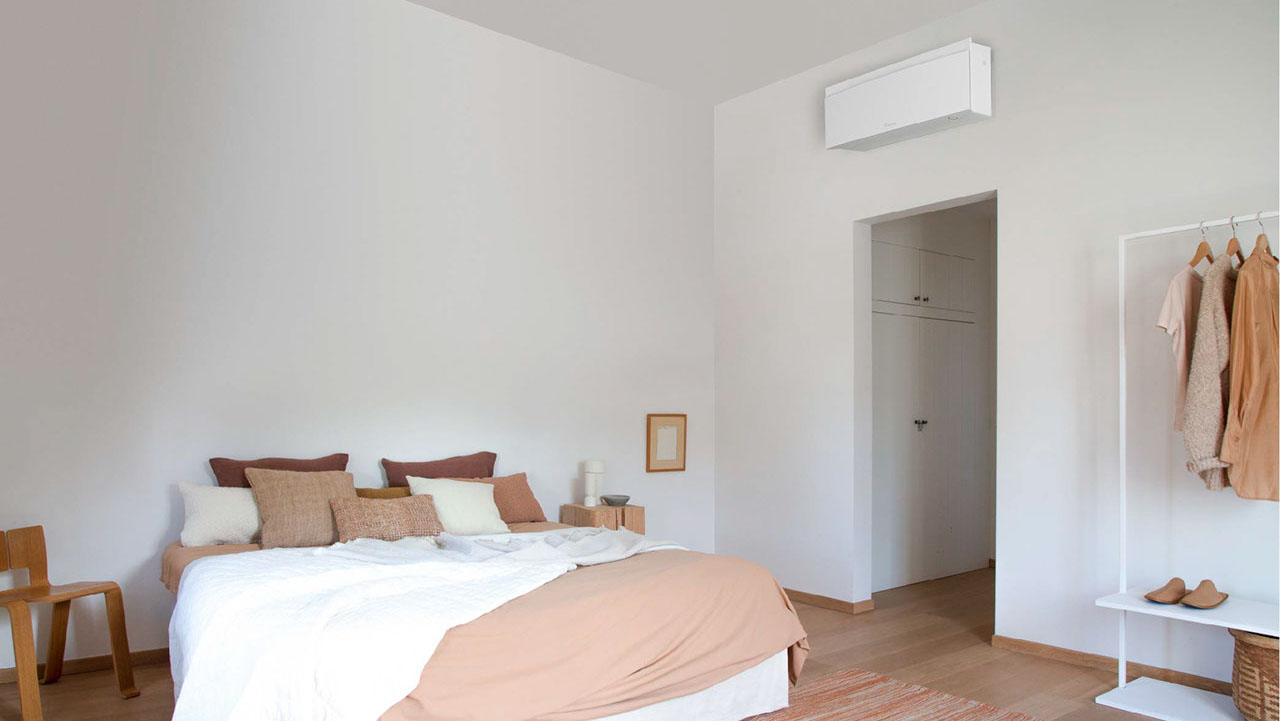How to optimise your Daikin Air to Air system
Date added: Wed 17 Apr 2024

Owning a Daikin Air-to-Air system is more than just investing in comfort; it's about embracing efficiency and sustainability. With the right approach, you can maximise the performance of your system while minimising energy consumption and costs. Here are some key tips to make the most out of your Daikin Air-to-Air system and your investment:
Our Tips for Optimisation
1. Set Temperature Settings Wisely
The temperature settings on your thermostat play a significant role in determining energy consumption. Daikin recommends setting your thermostat to around 18-20°C for heating and 24-26°C for cooling. Avoid extreme settings, as they can lead to unnecessary energy usage.
2. Use the Daikin Onecta app
The Daikin Onecta app is perfect for not only controlling your Air-to-Air units on the go but also for checking your units energy consumption! Simply link your device to your home network (via cable or WLAN) and install the app to adjust the thermostat, establish temperature schedules, and monitor your energy usage.
Voice control is also available for homeowners with Google Home or Alexa!
3. Utilise Different Modes
Take advantage of the programmable features of your Daikin system to customise temperature settings based on your daily schedule. Lower the temperature when you're away from home or asleep, and raise it during active hours. This ensures that energy is only used when needed, maximising efficiency.
Your system offers diverse modes tailored to various situations. Although Auto mode is typically recommended, there are occasions where switching to another mode becomes necessary. For instance, if you've ignited a fire or if abundant sunlight enters through the windows during a cold day, Auto mode may not be optimal as it could inadvertently attempt to cool the room. In such cases, opt for Heat mode instead.
On warm days, select Cool mode for a more comfortable temperature in your home!
4. Optimise Ventilation
Proper ventilation is crucial for maintaining indoor air quality and optimising energy efficiency. Daikin suggests using the ventilation mode on your system to introduce fresh air into your home when outdoor conditions permit. This can reduce the need for mechanical cooling or heating, resulting in energy savings.
5. Keep Doors and Windows closed!
To ensure your designated area is being heated or cooled at the most efficient rate, make sure all doors and windows are shut. This is especially important for units outside of bathrooms where often warm, moist air escapes from which could trigger the cooling or dehumidifying mode.
6. Pay Attention to Air Flow
Avoid having any furniture directly in front of your indoor units. This will prevent proper airflow and you will not feel the benefits in your home. Similarly, your outdoor unit also needs room to work efficiently so ensure any outdoor furniture or large plants are a good distance away.
7. Regular Maintenance
Regular maintenance is key to ensuring the longevity and efficiency of your Daikin Air-to-Air system. Daikin recommends scheduling professional maintenance checks at least once a year to clean or replace filters, inspect components, and ensure optimal performance. Additionally, keeping the outdoor unit free from debris and obstruction allows for efficient airflow and operation.
Optimising your Daikin Air-to-Air system isn't just about saving money; it's about embracing a sustainable lifestyle and reducing your environmental footprint. By following these tips and implementing efficient practices, you can unlock the full potential of your Daikin system while enjoying year-round comfort.
Read more about why an air-to-air system may be more suitable for your home here:
aikin-Air-to-Air-could-be-bette
r-suited-to-your-home
Links
gb/residential/products-and-
advice/product-categories/
heat-pumps/air-to-air-heat-
pumps.html
